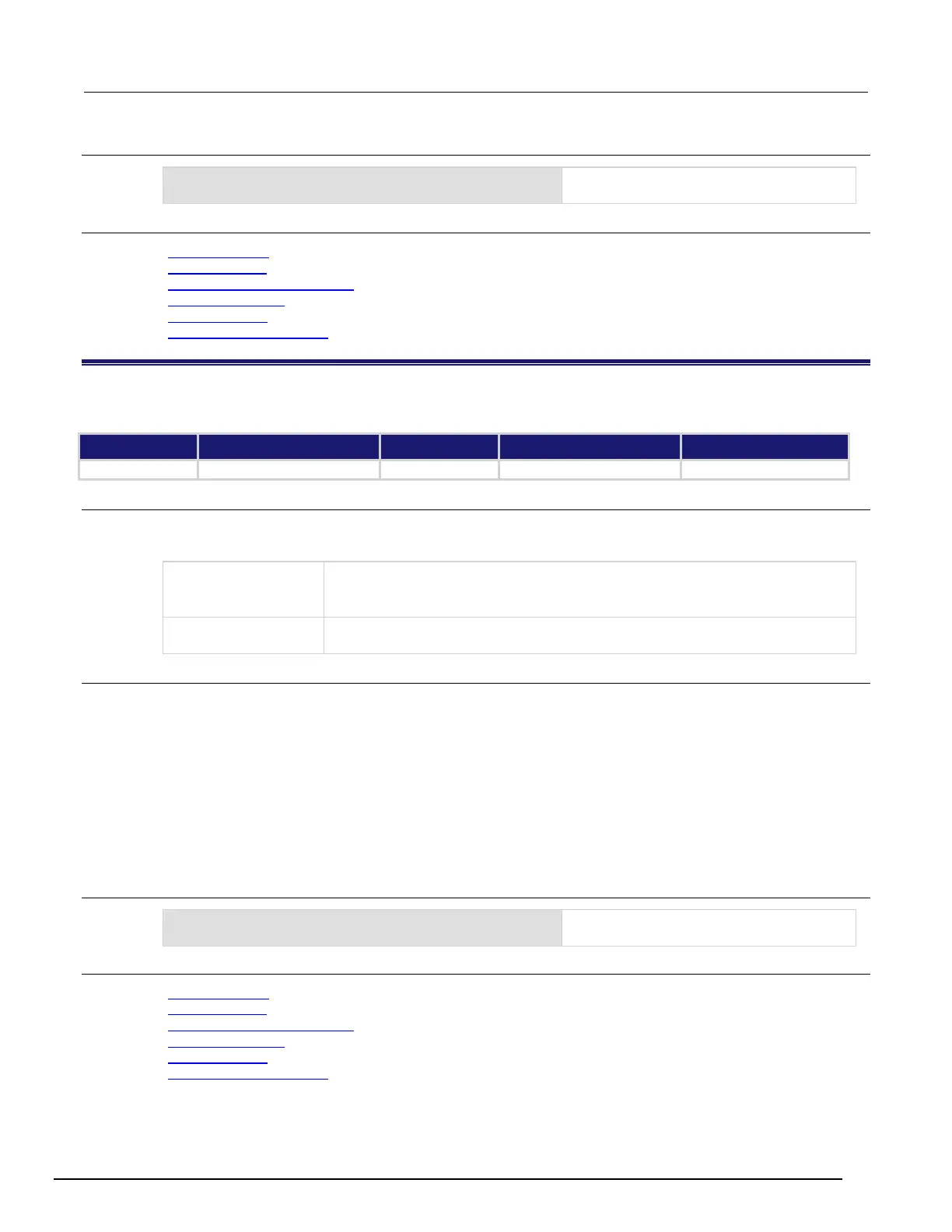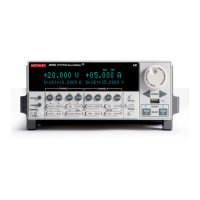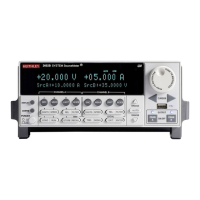Model 2657A High Power System SourceMeter® Instrument Reference Manual Section 7: TSP command reference
2657A-901-01 Rev. B/December 2012 7-21
Example
smua.nvbuffer1.collectsourcevalues = 1
Include source values with readings for
dedicated reading buffer 1.
Also see
bufferVar.clear() (on page 7-19)
Reading buffers
(on page 3-6)
smuX.measure.overlappedY()
(on page 7-204)
smuX.measure.Y()
(on page 7-208)
smuX.nvbufferY
(on page 7-210)
smuX.trigger.measure.Y()
(on page 7-238)
bufferVar.collecttimestamps
This attribute sets whether or not timestamp values are stored with the readings in the buffer.
Type TSP-Link accessible Affected by Where saved Default value
Attribute (RW) Yes Not applicable See Details 0 (disabled)
Usage
state = bufferVar.collecttimestamps
bufferVar.collecttimestamps = state
state
Timestamp value collection status; set to one of the following:
• 0: Timestamp value collection disabled (off)
• 1: Timestamp value collection enabled (on)
bufferVar
The reading buffer; can be a dynamically allocated user-defined buffer or a
dedicated reading buffer
Details
Assigning a value to this attribute enables or disables the storage of timestamps. Reading this attribute returns
the state of timestamp collection.
For dedicated reading buffers, all buffer attributes are saved to nonvolatile memory only when the reading buffer
is saved to nonvolatile memory.
When on, timestamp values are stored with readings in the buffer. This requires four extra bytes of storage for
each reading. When you turn on additional collection items, such as timestamps (this attribute) and source
values, it decreases the capacity of a dedicated reading buffer (for example, smua.nvbuffer1), but does not
change the capacity of a user-defined dynamically allocated buffer.
This value, off (0) or on (1), can only be changed when the buffer is empty. Empty the buffer using the
bufferVar.clear() function.
Example
smua.nvbuffer1.collecttimestamps = 1
Include timestamps with readings for
dedicated reading buffer 1.
Also see
bufferVar.clear() (on page 7-19)
Reading buffers
(on page 3-6)
smuX.measure.overlappedY()
(on page 7-204)
smuX.measure.Y()
(on page 7-208)
smuX.nvbufferY
(on page 7-210)
smuX.trigger.measure.Y()
(on page 7-238)
